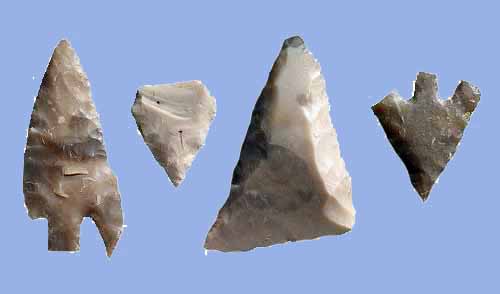The first phase of the Holocene epoch coincides with the culture of the Mesolithic or Middle Stone Age. Mesolithic is a transitional phase from the Paleolithic to the Neolithic period, i.e., from a man-hunter towards man who begins to deal with a primitive agriculture and livestock breeding.
It dates from about 10.150 BP (before present) to 6.500 BP. Mesolithic age for the most part continued tendency of the Upper Palaeolithic in terms of creating and developing new local cultures, while the free movement of people and migration in groups were rather reduced. The reason for this is the growth of forests in many areas that discourage people from moving from one place to another.
However, migration of humans during the Mesolithic era was, besides everything, high, especially in the habitable areas of northern Europe and Asia who had previously been covered by glacial cover. The climate, flora and fauna gradually acquired today’s character.
As glaciers withdraw, many large animals disappeared. Among the first to disappear was mammoth and hairy rhinoceros, while other animals, such as, elk and red fox went to the north following ice cover. After melting glaciers and with warmer climate came vast areas of forests (pine, fir, birch, oak, chestnut, etc.) and with that animal world also changed. In the forests, mesolithic people could usually encounter with chamois, noble deer – Caspian red deer, bears, reindeer, wild boars and other animals.
Those were small but fast animals, which did not lived in the packs. That is why hunting of such animals was no longer possible. Besides that, earlier methods and weapons were completely outdated and useless. New hunting conditions have resulted in significant development of throwing weapons as well as the progress in technique used for making weapons whose ultimate product was a bow and arrow.
In the Mesolithic Age significantly expanded a use of microlithons (gr. mikros – small, lithos – stone) i.e. a product made of stone whose length ranged from 1 to 2 cm, in the form of a prism, knife or a sharp spike, which were used as inserts in the wooden or bone handrails. These products are used for making tools that necessary for breaking, cutting, chopping or scraping, as well as an obligatory bow and arrow. Microlithons represented working part of the tools and weapons.
Technique of making microlithons was very advanced. New tools and weapons were lighter, better and much more convenient to use. Besides that, microlithon were easily replaced when it breaks.
Construction of the bow and arrow meant a huge man victory in his struggle with nature, or his struggle for life. That is how, in the hands of Mesolithic people, was fast and long-range weapon. This weapon was made with great precision of shooting targets and with lethal force. It became more important than spears.



One of the most important inventions, of Mesolithic era people is related to the throwing bat so-called boomerang, which was made of bent or flat piece of wood like reaping hook that could fly up to 150 meters. When boomerang struck target, with its well-sharpened point, it inflicted serious damage or injury. Many tribes were familiar with these weapons and they used it. New techniques in the development of tools and weapons enabled Mesolithic people that, depending on natural conditions, deal with new economic activities.
By changing fauna, hunting was suppressed and replaced by a new one, which was based on the finding of individual small animals. Such hunting was far more successful. Specifically, by using bow and arrow, man – hunter was able to catch fast animals, which did not live in packs. Some of those animals were beasts which were usually inaccessible to people. Favourable conditions for hunting allowed people to come to the big catch. Since they were no longer able to eat all animals, which they came across, they decided to let those wounded animals or their offspring alive. That is exactly, what led man to tame and domesticate some animals. They decided to hold and nurture those animals. The first domesticated animal was a dog, which later became man’s faithful companion. It was very easy to feed dog, because he ate everything that man eats. At the beginning, Mesolithic people used dog in their nutrition, and later on dogs were used for catching other animals, as well as for towing and keeping safe settlements in which people lived. That is how first major step forward was done, when it comes to domestication of animals. This step was also of great importance for the next stage in the development of human society.
Fishing and collecting economy continued to develop largely when it is compared to the previous period. On the shores many settlements were built, as evidences of that people found piles of fish bones and shells.
